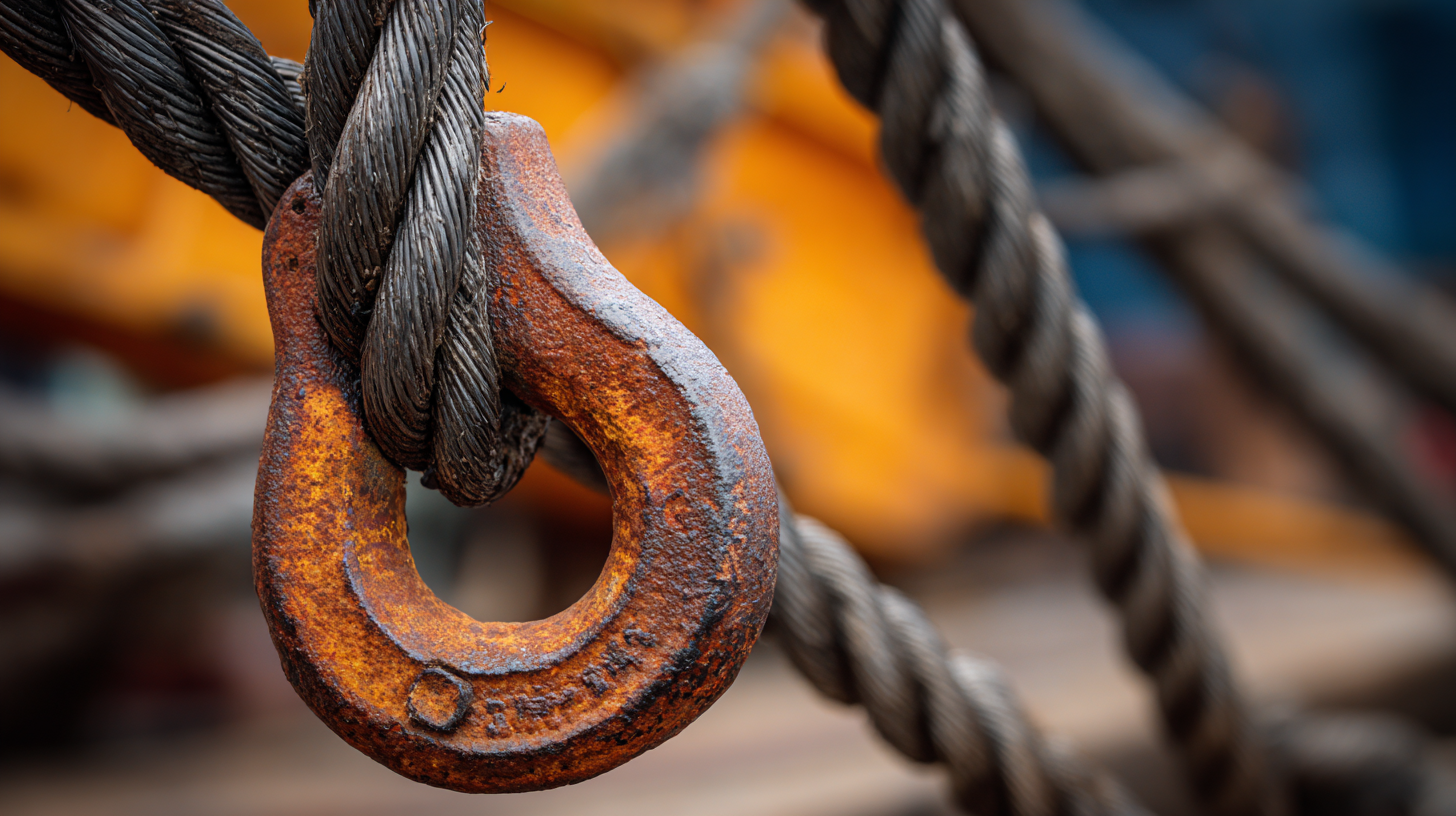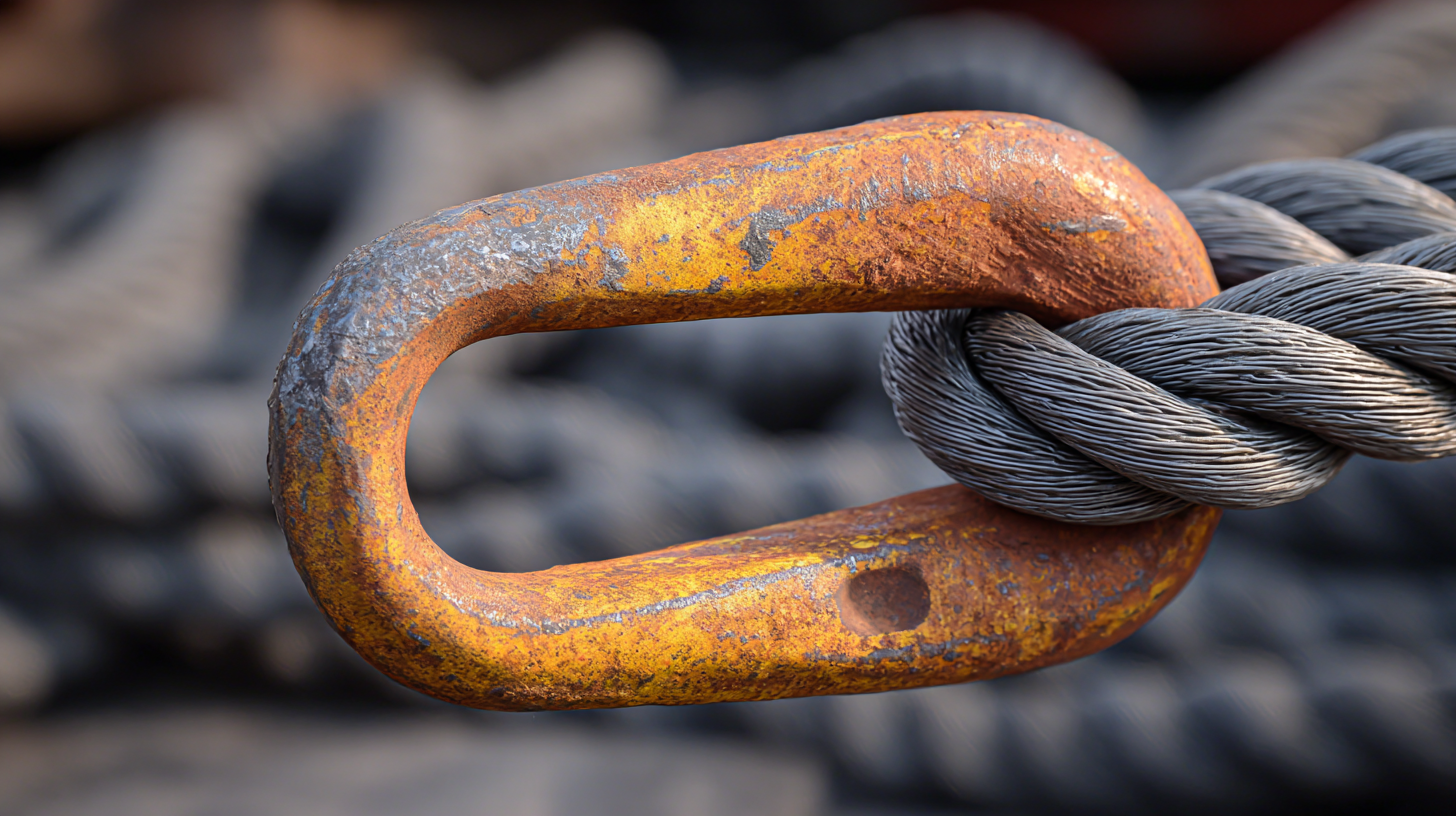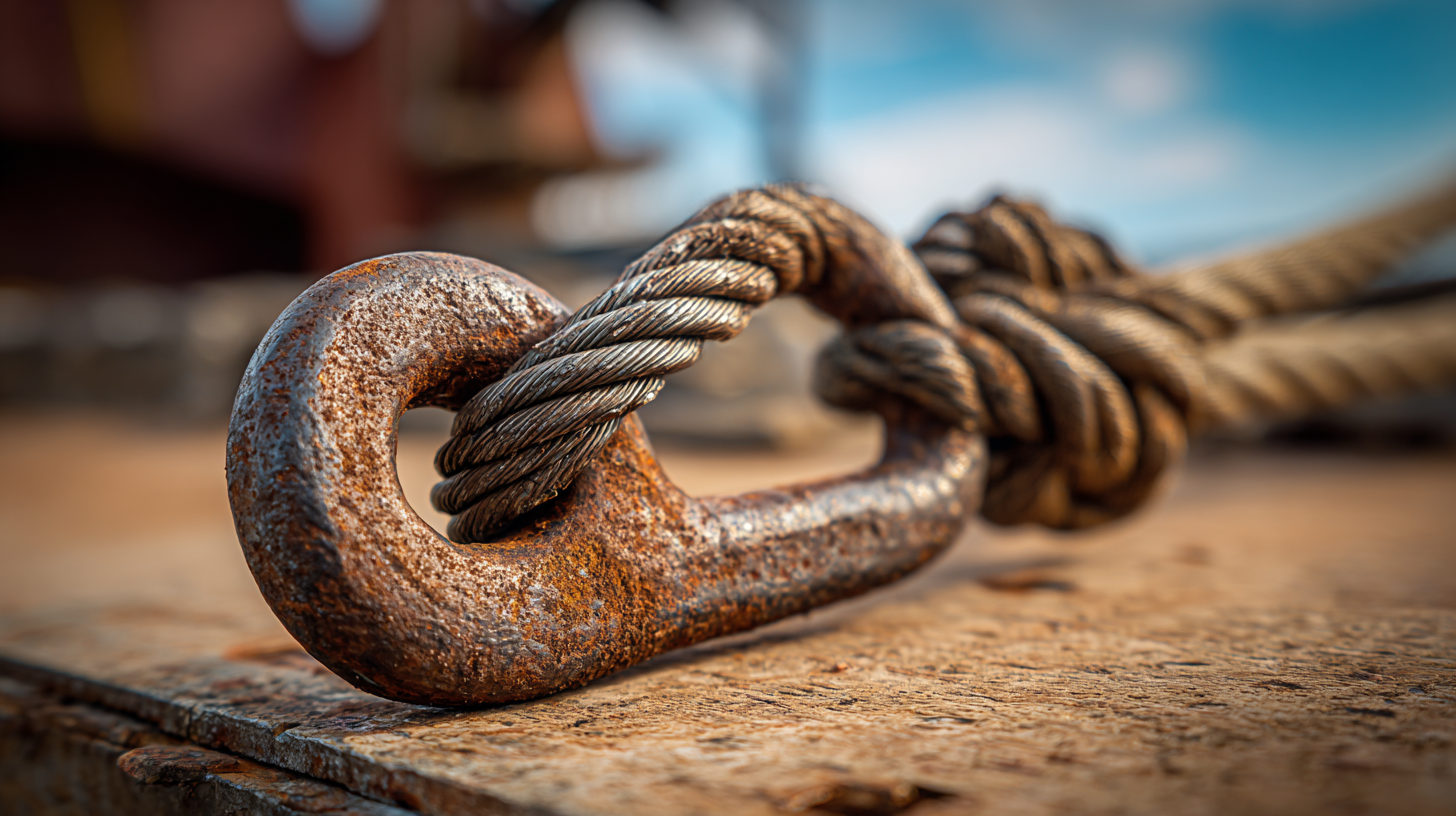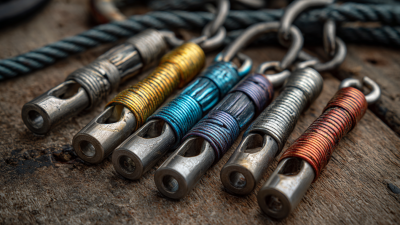 Selecting the right Wire Rope Eye Hook is crucial for ensuring safety and efficiency in various lifting operations. According to a report by the Occupational Safety and Health Administration (OSHA), improper use of lifting equipment accounts for nearly 25% of all workplace accidents, underscoring the importance of choosing the right components for load-bearing applications. The global wire rope market is projected to grow at a compound annual growth rate (CAGR) of 6.5% through 2027, highlighting the increasing reliance on high-performance wire rope systems in industries such as construction, manufacturing, and transportation. By understanding the key factors that influence the selection of Wire Rope Eye Hooks, organizations can optimize their load capacity and ensure compliance with safety standards, ultimately leading to more effective and secure operations.
Selecting the right Wire Rope Eye Hook is crucial for ensuring safety and efficiency in various lifting operations. According to a report by the Occupational Safety and Health Administration (OSHA), improper use of lifting equipment accounts for nearly 25% of all workplace accidents, underscoring the importance of choosing the right components for load-bearing applications. The global wire rope market is projected to grow at a compound annual growth rate (CAGR) of 6.5% through 2027, highlighting the increasing reliance on high-performance wire rope systems in industries such as construction, manufacturing, and transportation. By understanding the key factors that influence the selection of Wire Rope Eye Hooks, organizations can optimize their load capacity and ensure compliance with safety standards, ultimately leading to more effective and secure operations.
When selecting the right wire rope eye hook, understanding load ratings and safety factors is paramount. Eye hooks are generally rated based on their ability to handle specific loads, commonly referred to as their Working Load Limit (WLL). According to the American National Standards Institute (ANSI), the WLL should always be clearly marked on the hook, allowing users to gauge the proper application of the hook in lifting scenarios. For instance, a standard hook designed for a load capacity of 3 tons should not be used beyond this limit, as exceeding the WLL can lead to catastrophic failure.
Moreover, safety factors play a critical role in ensuring the reliability of wire rope eye hooks in various applications. The commonly adopted safety factor for lifting equipment ranges between 5:1 to 8:1, meaning that the hook should withstand five to eight times the maximum intended load before it is deemed unsafe. A report by the Occupational Safety and Health Administration (OSHA) emphasizes that using equipment with a proper safety factor not only reduces the risk of accidents but also extends the operational lifespan of the tools in use. Therefore, when choosing a wire rope eye hook, prioritize products with appropriate load ratings and adhere strictly to recommended safety factors to enhance operational safety and efficiency.
When selecting the right wire rope eye hook, understanding the material's properties is crucial for maximizing load capacity and ensuring durability. Eye hooks are typically made from various materials, each offering distinct advantages in terms of strength, resilience, and resistance to environmental factors. For heavy lifting applications, hooks made from high-strength steel or alloy steel are often recommended, as they can handle significant loads while minimizing the risk of deformation or failure. Employing hooks with a protective coating can further enhance their resistance to corrosion, especially in outdoor or marine environments.
In addition to strength, the material's fatigue resistance is another important consideration. Repeated loading and unloading can lead to wear over time, making it essential to choose a material that maintains integrity under such conditions. Stainless steel eye hooks, for example, provide excellent resistance to rust and corrosion while still delivering substantial strength. When choosing a wire rope eye hook, evaluating the intended load, environment, and frequency of use will help determine the most appropriate material to ensure operational safety and longevity.
When selecting the right wire rope eye hook to maximize load capacity, evaluating the design features of the eye hook is crucial. The first consideration should be the material used in the fabrication of the eye hook. High-strength steel is often preferred due to its durability and resistance to deformation under heavy loads. Additionally, an eye hook with a corrosion-resistant coating can enhance longevity, especially in harsh environments, ensuring reliable performance over time.

Another critical design aspect is the eye hook shape and size. An appropriately sized hook reduces stress concentration points and improves load distribution, which is essential for both safety and efficiency. Hooks with an optimized curvature facilitate smoother operation and decrease the likelihood of wear and tear. Furthermore, the presence of machining features, such as a locking mechanism or safety latches, adds an extra layer of security, reducing the risk of accidental disconnection while in use. By carefully assessing these design elements, users can select eye hooks that not only support maximum load capacity but also enhance overall performance and safety in various lifting applications.
Regular maintenance and inspection of wire rope eye hooks are crucial to ensure safety and optimal performance. Start by visually examining the hooks for signs of wear, deformation, or corrosion. Look for any cracks or breaks in the metal, as these can significantly diminish the load capacity and increase the risk of failure. Pay attention to the eye section; it should be free from sharp edges or excessive wear that could lead to cable damage.

In addition to visual inspections, it's important to implement a systematic maintenance schedule. Cleaning the hooks from dirt and debris can prevent corrosion, while applying a light lubricant can help protect against rust and improve functionality. Regularly checking the load limits and ensuring the hooks are used within their specified capacity is also essential. By addressing maintenance and inspection proactively, you can extend the life of your wire rope eye hooks and ensure they operate safely under load.
Selecting the appropriate wire rope eye hook requires adherence to established industry standards, which play a crucial role in maximizing load capacity and ensuring compliance with safety regulations. According to recent OSHA compliance trends, organizations must navigate evolving standards that emphasize not only structural integrity but also worker safety. A report indicates that approximately 60% of workplace incidents stem from improper equipment usage, underscoring the need for reliable and compliant selection of load-bearing devices.
Furthermore, the industry is witnessing a shift towards automated design tools that facilitate compliance with regulations such as IEC 60204-1. These tools help electrical designers streamline the process of machine control panel dimensioning, promoting safety and efficiency. As companies increasingly focus on sustainability, ensuring that suppliers adhere to rigorous compliance measures is essential. A growing number of global regulations mandate that supply chains reflect not only quality but also environmental responsibility, making it imperative for businesses to select eye hooks that align with these standards for optimal performance and risk mitigation.






